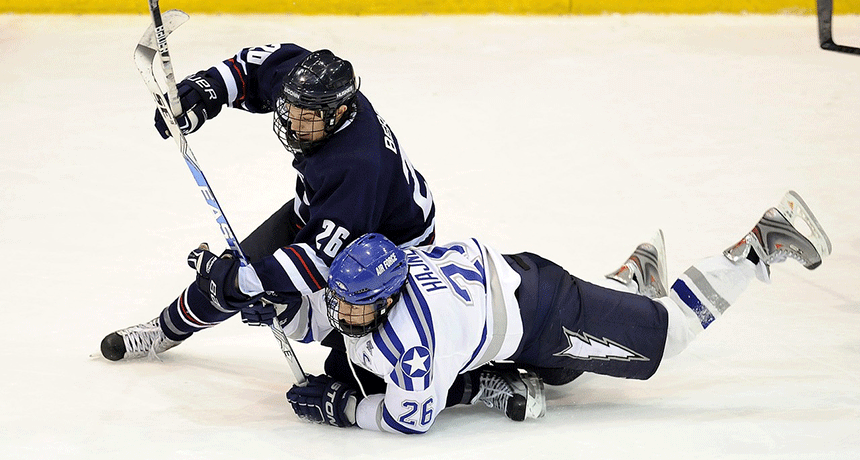Questions for ‘Athletes’ head injuries can provoke surprisingly long-lasting harm’

Contact sports such as football and hockey pose an especially high risk of concussion.
skeeze/Pixabay (CC0)
To accompany feature “Athletes’ head injuries can provoke surprisingly long-lasting harm”
SCIENCE
Before Reading:
1. What is concussion?
2. What types of events can trigger a concussion?
During Reading:
1. How common are concussions in U.S. adolescents? How many have had more than one?
2. What is working memory?
3. How did Caitlin Hudac’s team test working memory in concussion patients?
4. In terms of research studies, what is a control? For Hudac’s study, who were the controls?
5. What are ERPs and when do they show up in the brain recordings that Hudac’s team performed on concussion patients?
6. Kathryn Manning’s group looked at adolescent hockey players. What players served as “controls?” What types of seemingly contradictory findings did her data show up in those who had sustained concussions? What was the value of having those controls in understanding the findings in concussed athletes?
7. What similar, general conclusion did Hudac and Manning come to after evaluating their new data?
8. According to psychologist Dennis Molfese, how long does it take a concussion to completely heal? Why does he suggest it will be disturbing to hear?
9. What is g-force and how many g’s could youth football players encounter during play?
10. How did having two age groups of football players allow Steven Rowson’s team to understand the role of age in concussion risk? Were the younger players a “control” here, or not? Explain your answer.
11. What are CTE’s and are they the same thing as a concussion, a cause of concussions, or something else? Are they as bad as concussions for the brain? Use information from the story to explain your assessments.
After Reading:
1. Many athletic organizations and schools are considering limiting the level of aggressive play allowed in younger players, over concerns about head injuries. If you were an athletic director for a school district in your state or nation, at what age would you allow body checking in hockey or tackling in football? Explain your reasoning, referring to data from the story.
2. Many studies have used CTEs as a measure of concussion risk. How do the data described in this story challenge that assessment? What additional data would you like to have to resolve the risk of CTEs?
3. Many sports or sports-related activities that pose a concussion risk do not require the wearing of helmets. Soccer, gymnastics, figure skating and cheerleading are examples. Based on what you learned in the story, for which of these would you recommend helmets — and why?
MATHEMATICS
1. In 2015 (the most recent year for which data are available), there were 41,731,233 adolescents — people 10 to 19 years old — in the United States.
a) Based on the story, how many of these had sustained at least one concussion? How many had sustained multiple concussions? Show your work.
b) If adolescents constitute 13 percent of the U.S. population, what share of U.S. residents are were 10- to 19-year-olds who had sustained a concussion? Show your work.